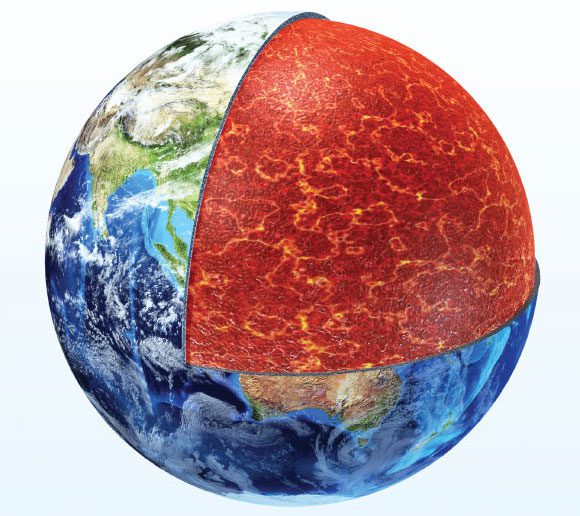A previously unknown layer of the Earth has been identified at a depth of 100 km below the planet’s surface.

Graphic illustrating the “asthenosphere” of the Earth – (Image: Leonello Calvetti)
According to Sci-News, this is a layer of molten rock temporarily referred to as the “asthenosphere”, which is denser and weaker within the lithospheric mantle. This asthenosphere extends from a depth of 100 to 700 km beneath the planet’s surface.
This mysterious asthenosphere is believed to play a significant role in plate tectonics as it forms a relatively soft boundary allowing tectonic plates to move through the mantle. However, the reason why it is soft—meaning that the rock is mostly in a semi-molten state rather than being “fully melted”—is still not clearly understood.
This discovery comes from a new study led by Dr. Junlin Hua from the University of Texas at Austin, aiming to specifically identify the mechanisms influencing plate tectonics.
The research also indicates that this asthenosphere does not significantly affect the overall flow of the mantle, despite having a relatively high melting rate, possibly due to the localized nature of the melting areas.
The new finding about the asthenosphere arose when Dr. Hua and colleagues were intrigued by initial discrete signals suggesting the existence of semi-molten rock beneath the crust. By synthesizing similar images, the research team created a new map showing the presence of this peculiar soft rock layer.
It is a layer of the Earth rather than just a localized area, as seismic data indicates its presence worldwide.
The study has been approved and will be officially published in the next issue of Nature Geoscience.


















































